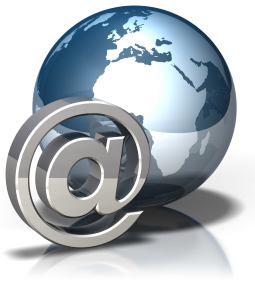Happy Tuesday, everyone! I know, Kelly’s Contemplation has typically been a Monday affair, and I apologize for the delay. As I kicked around what to share this week, I stumbled upon a curious trend. For the past month or two, people have consistently been searching for a “project closure email” as they have found their way to my blog. So, I thought, why not jump into this topic this week? Perhaps it will pique the interest of at least one person, and hopefully, a few more.
But before we dive in, don’t forget to treat yourself to our Video of the Week. Click here to watch.
We’re all familiar with the significance of a first impression. Do you exude confidence when you enter a room? What image do you convey in those crucial opening moments of an introduction? These are essential considerations. Yet, in our quest for that stellar first impression, we often overlook something perhaps even more vital. When you depart, have you left a lasting mark? And if so, was it the impression you had intended to leave?
Projects tend to be remembered for their schedule and budget overruns. But they often overshadow significant shifts in strategy by the executive board or your client. I bring this up because, during your project’s “sign-off” phase, you have a golden opportunity to present a competent, effective, and accurate summary of the entire project. This email will continue to represent your project, your organization, and you, long after you’ve moved on.
So, what should this email encompass? {Think Project Sign-Off Document)
- Email Subject: Project Closure | [Insert Project Name]
- Executive Summary: A concise statement outlining the project’s objectives.
- Schedule: What was the initial target date, and when was the actual completion achieved.
- Budget: What was the planned budget, and what was the final expenditure?
- Changes: Detail any alterations that impacted the schedule, budget, or both, and describe their final resolution (resolved, new requirements, etc.).
- Link or Path to Archived Project Documents
- Thank You Statement/Summary
- Attached Project Sign-Off Document
- Review Your Stakeholder Register: Ensure that you’ve included all the relevant individuals in the distribution.
Of course, this is just one approach, and I hope it has provided some value. I would love to hear your ideas and feedback on this topic. Please share your thoughts; they’re greatly appreciated!
Resources:
- Inside Prince2: Closing a Project by A Girl’s Guide to Project Management
- Project Closure: Planning the End by The PM Hut
- E-mail Etiquette: 8 Tips to Avoid Communication Blunders by Meridith Levinson

Keep up the awesome work !! Lovin’ it!
certainly like your web site but you have to check the spelling on several of your posts.
Several of them are rife with spelling issues and I find it very
bothersome to tell the reality however I’ll definitely come
again again.
En esta página web de ropa swag, es posible encontrar muchas gorras plans con estilo swag.
Essendo la procedura reversibile, bisogna continuare a portare le lenti ortocheratologiche Paragon CRT fintanto che si voglia correggere la miopia.
It’s nearly impossible to find experienced people on this subject, however, you seem
like you know what you’re talking about!
Thanks
Hi there, You’ve done an incredible job. I’ll definitely digg it and personally suggest to my friends.
I am confident they’ll be benefited from this website.
Paragraph writing is also a excitement, if you be familiar with afterward you can write otherwise it is complicated to write.
Hey just wanted to give you a quick heads up and let you know a few of the images aren’t loading correctly.
I’m not sure why but I think its a linking issue.
I’ve tried it in two different internet browsers and both show the
same outcome.
This paragraph will assist the internet people for setting up
new weblog or even a blog from start to end.
Excellent post, this will surely help to close a project.
Thank you , great mertial for me.
Thank you so much for the comment! Great add-ons, very important to clearly set the expectation that this thing is done. Not done and a few things to follow…done.
Anyone who quotes from Scrubs is okay in my book. :)
As for the blog post: excellent advice as always! So often, closure is neglected because we (yes that includes us) are too anxious to move on to the next project.
The only items I’d add are:
– If your project is with an external customer, the closure email is the opportunity to confirm back to the customer that the project is indeed “closed”, ie there’s nothing more to come. Contractually, this is crucial.
– If there was a post-mortem or lessons learned meeting, include the link to the meeting minutes or a database where the lessons are stored.
Good resourceful post, RK. Really helpful to project teams.